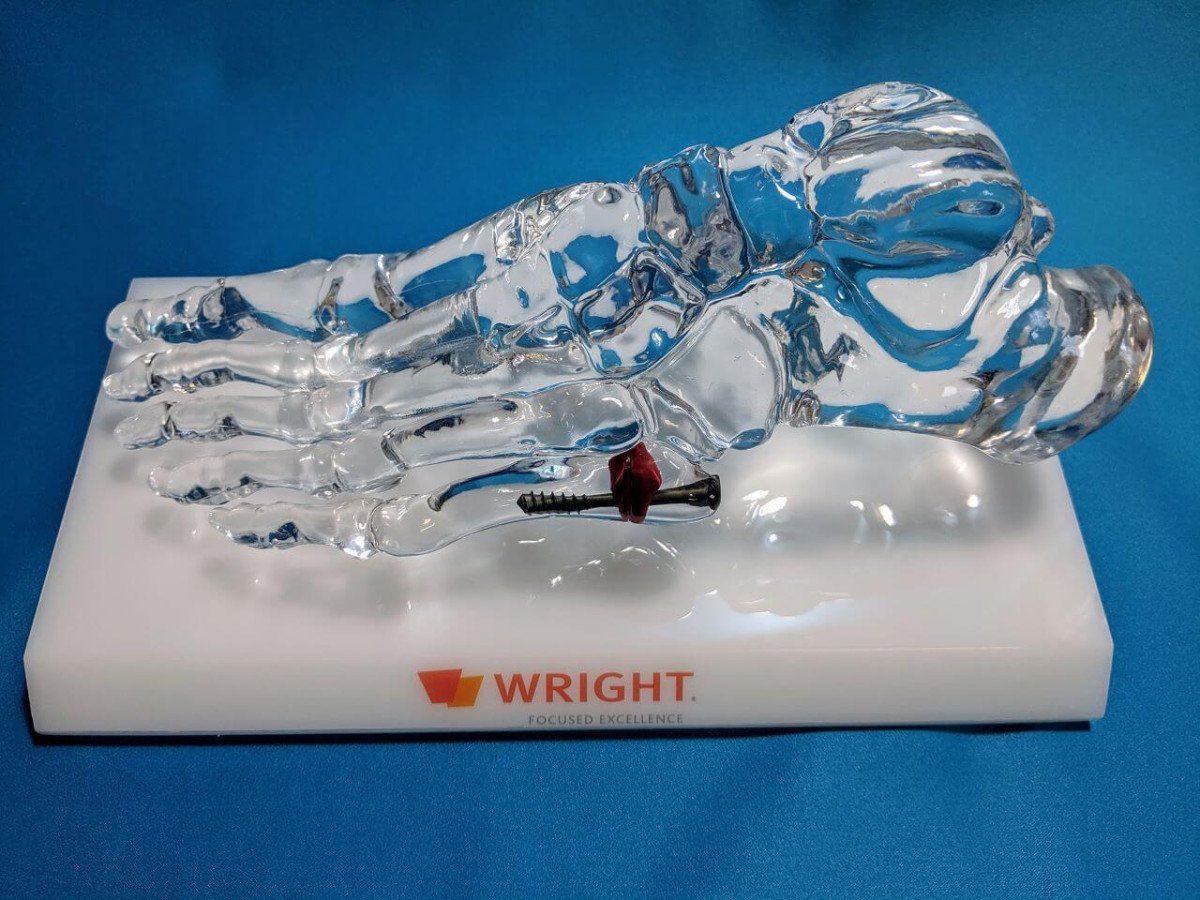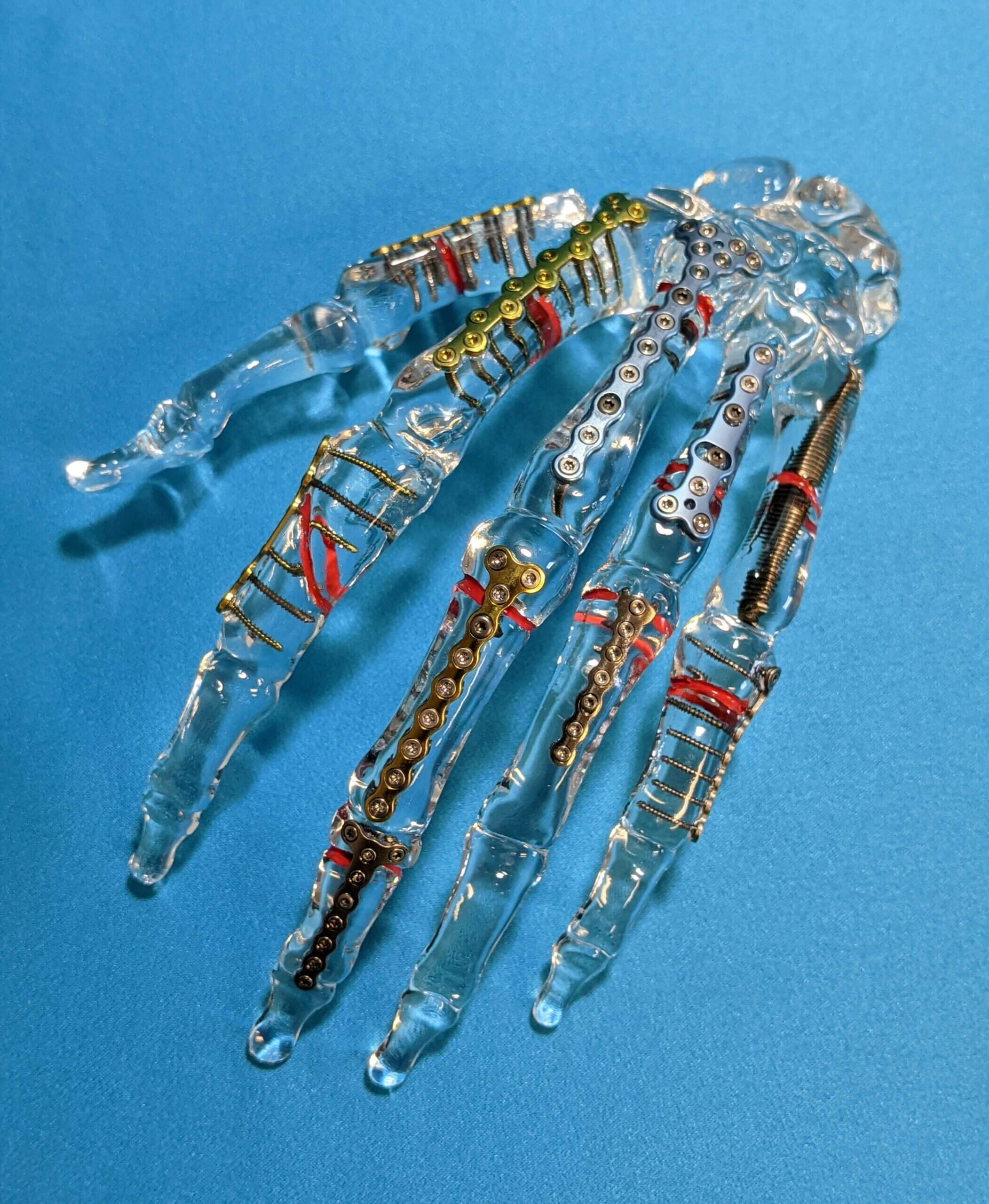Precisely manufactured for durability and accuracy
Medical models of extremities
Our unique medical model design and manufacturing processes make acrylic bone model development incredibly efficient, no matter how complex the bone construct or implant assembly. We provide total peace of mind as we walk clients through the development process, often in real-time, to ensure models are 100% accurate from the start and deliver on time!
Our translucent extremity models facilitate in-depth explanation of a variety of orthopedic surgical techniques, such as:
Open Reduction/Internal Fixation (ORIF)
Detailed extremity models help demonstrate hardware and prosthetic placement and procedures for internal fixation of displaced, comminuted, or unstable fractures of the long bones, metacarpals, metatarsals, and phalanges. We provide precise models of the humerus, radius, ulna, tibia, fibula, femur, foot, and hand. These models are ideal for demonstration or training purposes, particularly where there is little or no prior understanding of the procedure.
Percutaneous Pinning
Our models can also easily be used to demonstrate wire fixation or percutaneous pinning. This is especially useful when dealing with the bones of the hands and feet, such as the phalanges. Since the models are translucent, it is simple to show every angle of the procedure and hardware placement.
Tendon Repair
Patients and even healthcare support workers often do not have a good understanding of tendon repair/tendon transfer procedures, particularly regarding the underlying bony anatomy. Using clear models simplifies explanation of the exact positioning of the affected tendons and operative sites.
Carpal Tunnel Release
Carpal tunnel syndrome has become a widespread problem in our modern world of computers and repetitive motion. More and more patients are requiring carpal tunnel release procedures. Our hand models are perfect tools for explaining the complexities of nerve entrapment and operative approach.
See Surgical Task Trainers or FlexBones

“The team at Encoris is fantastic to work with. They have provided custom models that exceeded expectations. I can’t wait to get them into the hands of our representatives and surgeons!”
Katy Jo J. – MedEd & Marketing Services, Spineology
ACRYLIC EXTREMITY MODELS









